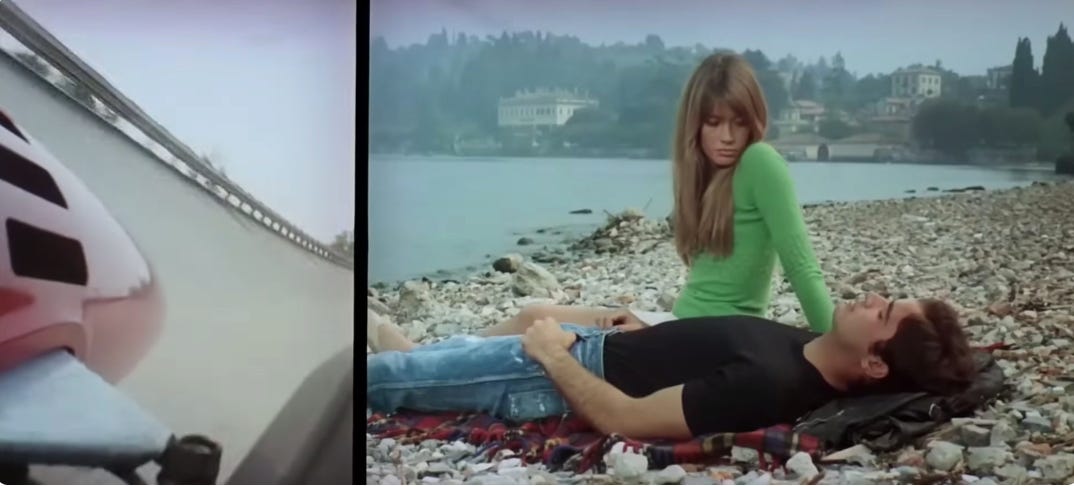Speed! Exciting, ain’t it? He says, glancing at an officious letter from the Metropolitan Police awarding me three points on my licence and a £100 fine. Not that I’m into motor racing especially — or at least modern-day Formula One — which strikes me as rather high-tech and remote, tempered with an unhealthy dose of bling, but I do have a thing for the more understated vintage stuff — the days of Brooklands and Goodwood, as recreated in Dance with a Stranger (1985), starring Rupert Everett as the racing driver, David Blakely, and the historic European circuits, whose evocative names trip of the tongue: Monaco, Monza, Spa-Francorchamps and, of course, Le Mans.
Which takes me to John Frankenheimer’s Grand Prix (1966), billed by people who know what they’re talking about as “the best movie ever made about motor racing”. It’s really gripping. The plot’s relatively simple. The film follows the lives — and loves — of four international racing drivers over the 1966 Grand Prix season. Urbane French driver Jean-Pierre Satie (Yves Montand), on the verge of retirement; pukka stiff-upper-lip Brit, Scott Stoddard (Brian Bedford); how d’ya say Italian glamour boy, Nino Barlini (Antonio Sabàto); and lobotomised American, Pete Aron (James Garner) — yep, he of Rockford “At the tone leave your name and message and I’ll get back to you” fame. And with the cars — the Ferraris, Cooper-Maseratis, Brabhams and BRMS, come the girls — She-Who-Can-Do-No-Wrong, Françoise Hardy in white jeans, Eve Marie Saint (North by Northwest) in Pierre Cardin, Jessica Walter in a yellow trouser suit and Geneviève Page in Yves Saint Laurent. It must have been awful being a racing driver’s other half. Especially in the 1960s when, without today’s safety regulations, motor racing was incredibly dangerous. It’s worth noting that several of the real-life racing drivers who appear in the film in cameo roles were soon to lose their lives: Lorenzo Bandini (Monaco Grand Prix, 1967), Jim Clark (Hockenheimring, 1968) and the Terry-Thomas of racing, Graham Hill, who died in a light aeroplane crash near Elstree aerodrome in 1975.
And as with Those Magnificent Men in Their Flying Machines (1965), the more one reads up on Grand Prix (1966), the more remarkable one finds it. Again, this is real life. The real deal. No puerile CGI, dated back-projection or special effects. It’s amazing. Filmed partly in a live-action, neo-documentary style with handheld cameras, Frankenheimer shot the Grand Prix sequences at the actual events, just before the race was due to start, a remarkable feat of organisation and logistics. And even more extraordinary, the actors (with the exception of Brian Bedford, who “could barely change a gear”) are actually driving the cars — at speed — around the genuine circuits. And that’s when they discovered that James Garner had the aptitude of a racing driver. The sequence in which his car catches fire at Brands Hatch and Garner has to roll out through the flames is real. I mean, with health and safety and insurance, can you imagine this happening today? It’s unimaginable!
Keep reading with a 7-day free trial
Subscribe to Luke Honey's WEEKEND FLICKS. to keep reading this post and get 7 days of free access to the full post archives.







